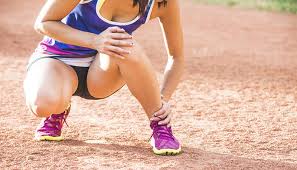I ran the Exeter City 10k on Sunday, whoop whoop! My time won’t break records but I’m really pleased with how it went. I’m also feeling fine today, which is a relief. I’m hoping the same is true for my brother in law, who ran as well. He said he definitely stretched loads in the time he had waiting for me to finish (quite a while…) and I choose to believe him.
He also mentioned that for the latter part of the race his feet were numb. It started with pins and needles and after a while his feet were numb. This could be because of a number of things but he’s planning to get some new running shoes and I expect that will help. However, if it’s not the shoes then he might need to look elsewhere: his running gait perhaps, or his core stability. It is something that needs to be addressed though before it starts affecting his knees, hips, or even his neck. One joint affects another, you see, and very small things can make big changes.
I saw a client last week who had problems with pain and instability in his ankle. The pain had started when he was running, which is something he started recently. He had built up the running slowly but I still think he may have been attempting a little too much too soon. However, upon inspection of the ankle and foot there were other factors at play….
Instability is not just a result of damage or weakness, but of a lack of proprioception. Proprioception is the unconscious sense of balance and spatial awareness which helps us stay upright, not walk through doors nor stumble over stairs. Nerves, muscle memory and experience all add to proprioception and when we have an injury or something inhibiting our natural proprioception, the chances of healing well and returning to full strength are diminished.
One of the rehab exercises I give my clients with ankle problems is designed to increase proprioception and get the foot used to feeling its way, so to speak. It’s easy – put a towel on the ground and use your toes to pick up the towel. Your brain is telling your toes what is needed, where, and when, and they learn to obey directions and work with the foot, increasing strength and stability. This client, though, had not cut his toe nails for slightly too long and I could see quite clearly that the elongated toe nails themselves would have been hindering proprioception in the foot. Simply by cutting his nails and allowing his toes to feel their way, his ankle stability would increase. He needs to keep mobilising and strengthening it too of course, but often it is many little things which work together towards recovery.
Personally I can’t understand how people with long fingernails can get by, and toe nails are no different. I can’t type, text, write or do basic household chores if my fingernails are too long (let alone what my clients would say if I dug talons into them) so I doubt my running gait would be particularly efficient if I didn’t keep my toe nails clipped.
I’ve talked about toe nails quite a lot now, and they aren’t usually people’s favourite topic of conversation so I’m going to leave it there. Now, go and book a pedicure. Just in case.




